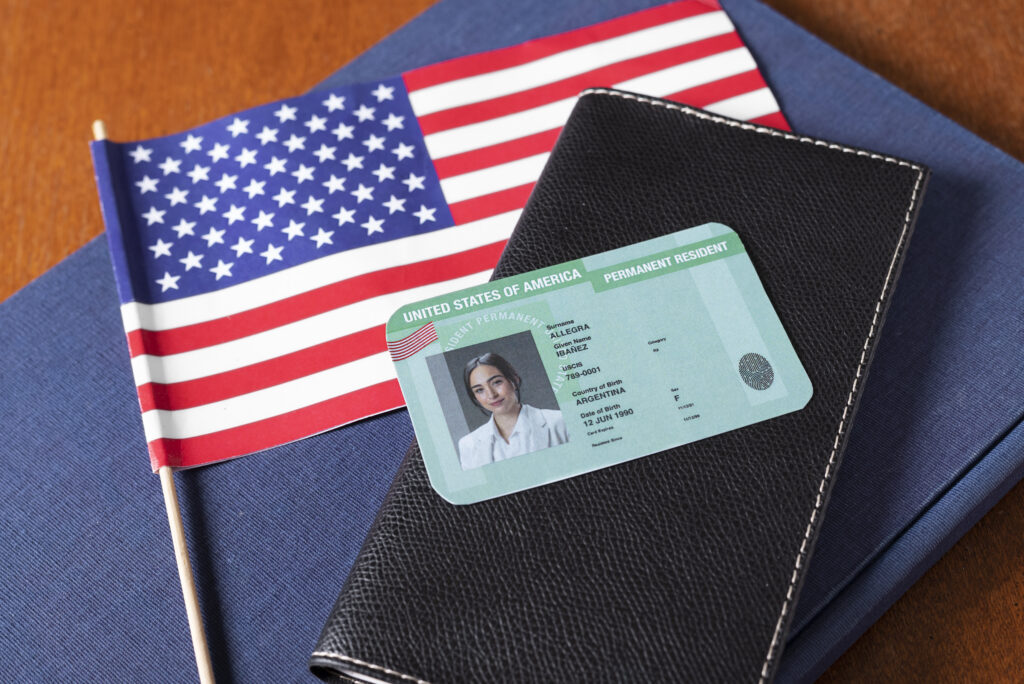Guide to US Applications • Undergraduate
UC Application Made Easy: A Guide for International Students
POSTED ON 06/30/2023 BY The Red Pen

Considered one of the best public university systems in the US, the University of California (UC) has nine undergraduate campuses – UC Berkeley, UCLA, UC Santa Barbara, UC San Diego, UC Irvine, UC Davis, UC Santa Cruz, UC Riverside, and UC Merced. You must apply through the UC application form to pursue your undergraduate degree at one of these campuses. You can apply to any or all of the campuses through their portal. But remember that this application platform is only for colleges within the UC system.
You may create an account for free, but applications cost $80 per campus for international students. The application window spans from October 1 to November 30, but you can access and work on your application before October 1. The University of California’s acceptance rate varies across the campuses, highlighting the significance of careful consideration when selecting your preferred campuses and majors while completing the application form.
Here’s a breakdown of each section in the UC application form in easy-to-understand terms:
About you:
The UC application form begins by asking about you and your family’s details. You may need to speak with your parents or legal guardians to answer these questions. This enquiry is to get your background information and understand your financial circumstances. Its sub-sections include:
1) Personal information:
This page requires your biographical information like legal name, date of birth and place of birth, as it appears on official documents, like your birth certificate and passport.
2) Contact information:
Enter your phone number and mailing address. It is most likely where your parents or legal guardians live. This vital information is essential as the school may want to send brochures, ask questions regarding your application or inform you about admission decisions.
3) Citizenship and residency:
You must provide your current citizenship and residency status, visa details or visa plans.
4) Demographics:
This page attempts to understand your ethnic background, gender identity, and sexual orientation. The UC system collects this information for statistical reasons and is not used to determine your admission. All UC campuses promote inclusivity and equal opportunity.
5) Your background:
You will be asked to indicate your spoken languages, marital status, intentions to enlist in the army, and whether you’ve been in foster care or a dependent of a US military veteran or service member.
6) Your household:
You must enter details about who you live with, the family income and the number of dependents it supports. This information is to determine your eligibility for an application fee waiver.
7) Parent information:
This section requires you to furnish details about your parents’ jobs and education.
8) Statement of Legal Residence:
The UC system needs to know your residency status to determine whether you qualify for the California resident fee structure and admission requirements.
Keep all the required documents, including your birth certificate, passport, and other relevant personal identification papers, while completing the application form.
Campuses and majors:
In this section, you must indicate the University of California campuses you want to apply to and the majors you intend to pursue at each school. This section comprises:
1) UC values:
You must read this section to understand the university’s community principles.
2) Term & Level:
On this page, you will have to inform the university about which term you plan to join and your application level (freshman, transfer, others).
3) Choose campuses:
This page will offer you a checklist of all the campuses within the university. You can check one or all the campuses in any order, except when applying to UC San Diego. In that case, you must rank the six undergraduate colleges within UCSD (Revelle College, John Muir College, Thurgood Marshall College, Earl Warren College, Eleanor Roosevelt College, or Sixth College) in order of your preference. Remember, there is an application fee of $80 per campus.
4) Choose Majors:
Some campuses allow you to choose only one, whereas others allow you to add an alternate major. You may also apply as undecided if you are still contemplating about your major. The UC application system also lets you know if certain programmes or colleges within the institutions aren’t open to first-year students.
Academic history:
UC colleges require you to self-report your academic history, courses, and exam results from grades 7 and 8 to 12 and declare which schools you attended during high school. This section is divided into five parts:
1) Grades 7 and 8:
The academic history section of the UC form asks you to declare 7-8 grade courses such as math and languages other than English as part of the “A-G” subject requirement. Generally, most international students complete higher-level math and language courses in grades 7 & 8.
Once you arrive at this question, select the appropriate subjects and indicate your term. You don’t need to declare which middle school you attended.
2) High schools:
The next question in the academic history section will prompt you to enter which high school you attended.
- First, you must specify whether your high school is in California, out of state but within the US or outside the US.
- You may select a specialised curriculum, such as ‘home school’ or ‘independent study’ if applicable.
- You will then be able to choose your specific high school and city. If you attended more than one high school, please mention all of them till the end of your high school graduation. For each high school you select, you must enter your dates of attendance, the academic years you attended, and the corresponding grade level. If you took summer courses in high school, check those boxes to enter details.
- By the time you graduate from high school, you are expected to complete a specific set of A-G courses, such as:
- “A” History/Social Science (two years): Includes one year of world history, cultures, and geography; and one year of US history. Or, one-half year of US history and one-half year of American government.
- “B” English (four years): Includes college-preparatory English. Only the highest year will be counted if you take English as your second language class.
- “C” Math (three years required; four years recommended): Includes college preparatory mathematics. The minimum pattern is algebra I, geometry, and algebra II. Math courses taken in the 7th and 8th grades may be used to fulfil part of this requirement.
- “D” Laboratory Science (two years required; three years recommended): Includes subjects like biology, chemistry and physics, and you must complete at least two.
- “E” Languages Other than English (two years required; three years recommended): This may include your native language. Courses taken in grades 7 and 8 may be used to fulfil part of this requirement.
- “F” – Visual and Performing Arts (one year): This may include classes such as dance, drama, music, or visual art (drawing, painting, etc.).
- “G” – College Preparatory Elective (one year): This includes elective classes or an additional subject from the A-F courses beyond those used for A-G requirements.
Things to remember
- A-G subject area: Select the relevant category for each subject. Do not select elective subject options for core subjects. For example, social sciences like economics or business can be listed under world history, cultures or geography. Within math, you will have options like math I, math II, and math III. IB TOK can go under “interdisciplinary”.
- Honours: For IGCSE, CBSE, ISC, or HSC courses, select the ‘NH’ (No Honours) option. For IB courses, you may declare your honours.
- Term: Based on the high schools you have attended, you must enter the grades for each semester, trimester or quarter. These have to be identical to those on your school’s transcript. If, for a particular semester, you don’t have a grade on your transcript, select “No Grade” in the drop-down menu.
- Grades: Declare grades by using the drop-down or free textbox. For grade 12, you can put IP (in progress) or PL (planned) if the term hasn’t started.
3) Colleges attended in high school:
If you took college or university-level courses for credit, you should accurately declare which institutions you attended. This includes any college-level coursework, including ones taken on your high school campus. If you did not take any college coursework in high school, select ‘I don’t have any colleges to add’. Remember that incomplete and incorrect information may jeopardise your chances of studying at a UC campus.
4) College courses taken in high school:
This section of the UC form requires you to declare in detail any courses pursued outside your high school. Beyond A-G course requirements for grades 9-12, many students attend classes that pique their interest. Most opt for college or university-level courses that can count as extra credit. For instance, you may have taken credit-bearing courses like programming, robotics or psychology. To apply to a UC school, you must reveal them, irrespective of withdrawals, incomplete courses and the grades you’ve received. But do not list athletic courses or those with less than three credits. Also, do not report classes which were not credit-bearing.
5) Additional information:
You may use this optional section to elaborate on why you took a particular course. Or, you may explain grade boundaries within your school or any other relevant circumstances.
Test Scores:
Like every application form, the UC system requires you to declare your scores. This section is divided into:
1) AP exams:
Advanced Placement exams are not required for admission, but you can report them on this page if you have taken or plan to take them.
2) IB exams:
Similarly, the UC form doesn’t require you to disclose the results of the International Baccalaureate (IB) examinations. However, you should share your score or predicted score if you took these exams.
3) English language proficiency tests:
If you’re not from a native English-speaking country, you must submit scores from one of the following tests:
- Test of English as a Foreign Language (TOEFL)
- International English Language Testing System (IELTS) examination.
- Duolingo English Test (DET).
- ACT English Language Arts Test.
- SAT Writing and Language Test.
4) International exams:
If you’ve studied outside the US or within an educational system that includes one or more external exams, you must report completed, planned, or predicted scores in this section. Some external exams include:
- GCSE
- IGCSE
- O-Levels
- GCE
- A-Levels
- National board exams for specific countries
Activities and awards:
After your academic history and test scores, the UC application form wants to know what you do when you aren’t studying. You must only declare activities you’ve participated in during grades 9-12. The ones before that don’t count. Even though you’ll have room to write about 20 activities, remember that the university is looking for quality, not quantity. Therefore, you must handpick experiences demonstrating commitment, responsibility, leadership, and genuine interest. This page includes the following subsections:
1) Award or honour:
If you’ve received recognition for your efforts in high school, this is the place to showcase them. For every distinction received, you must:
- Name the honour or award.
- Select the level (state, national, international etc.)
- Choose between “academic” or “non-academic” achievements.
- Select the grade in which you won the award.
- Describe what you won within 350 characters.
2) Education preparation programmes:
You may mention programmes or activities that have enriched your academic experiences. These include summer programmes (not for credit), academic preparation courses like FIITJEE, research projects, and academic clubs/competitions. You must:
- Select a programme from the drop-down list. If it’s not included, select “other” and mention it.
- Describe the programme in 350 characters.
- Choose the grade in which you participated.
- Reveal the time you spent on the programme.
3) Extracurricular activities:
Mention hobbies, clubs, sports or anything else you still need to discuss. The activities include leadership roles, creating a website or blog (include links), sports, MUN/debating and more. For each activity, you must:
- Name of the activity.
- Describe your experience and what it taught you within 350 characters.
- Select the grade in which you participated.
- Reveal the time you spent on the activity.
4) Other coursework:
These academic courses do not fit UC’s A-G subject areas. They may include religious studies, vocational courses, non-transferable community college courses or any course that isn’t granted credit. You must:
- Name of the course.
- Describe significant themes or topics, where you took them and what they taught you within 350 characters.
- Select the grade in which you took the course.
- Reveal the time you spent on the course.
5) Volunteering/community service:
These are services you’ve provided for a social cause without getting paid. They may include working with an NGO, organising fundraisers/charity events, clean-up drives, blood donation drives, and unpaid jobs or internships. For each mentioned service, you must:
- Name the organisation, programme, school or group you volunteered to support.
- Describe the organisation, programme, school or group in 250 characters.
- Elaborate on your role, the differences you made and what you learnt.
- Select the grade in which you volunteered.
- Reveal the time you spent on community service.
6) Work experience:
The UC form also allows you to reveal paid jobs and internships. For each job you mention, you must;
- Name the place of work.
- Describe the company in 250 characters.
- Mention your job title.
- Describe your job responsibilities in 350 characters.
- Select the grade in which you worked.
- Reveal the time you spent while working.
Apply for scholarships:
The UC form also allows you to apply for scholarships and financial aid. Even though scholarships and financial aid are limited for international students, you should fill out this section.
UC considers scholarships based on 10 categories. Each category has a drop-down list that enables you to make your selection. If you don’t see any categories relevant to you. The categories are:
- Academic major or interest
- Affiliation with a group, programme or organisation
- Ancestry and descendants
- Career plans
- Ethnicity, national origin or religion
- Extracurricular activities & work experience
- Family circumstances and relationships
- Health/Disabilities
- School or geographic affiliation
- Transfer students
Personal insight:
In this section of the UC application, you can share details about your life experience, interests, ambitions and inspirations. This is where the universities get to know you. Think of it as your interview with the admissions office. Feel free to make lists, narrate examples and anecdotes and showcase your writing skills. Mention your triumphs and challenges, talk about leadership opportunities and use your individual tone of voice. This section is divided into:
1) Personal insight questions:
Instead of long essays required by other colleges, the UC form asks you to answer four out of eight questions, with a word limit of 350 words for each response. These four short write-ups act together as your personal statement and supplemental essay. Ensure you’ve highlighted your personal qualities and any interests and goals you haven’t elaborated on in the rest of your application.
2) Additional comment:
This space in the form is for you to describe anything you have not had the opportunity to mention elsewhere in the application. It may include a reason behind a particular trend in your GPA or whether unforeseen events, such as illness or a death in the family, impacted your school performance. You could also explain a change in schools or other extenuating circumstances.
Review and submit:
Once you’ve completed your UC application, you may review your inclusions before hitting the submit button. If you’ve skipped or missed any required questions, you’ll see a “To Do” button. Remember to inspect the pages and sections, even if you see a checkmark. Get your counsellor to proofread the form before submission.
The UC application platform is very different from other centralised application platforms in the US, such as the Common App or the Coalition App. Here’s our blog on everything you need to know about the University of California. You may also want to read about US application deadlines. If you require assistance while using these platforms or any help with US undergraduate applications, please get in touch with us.



